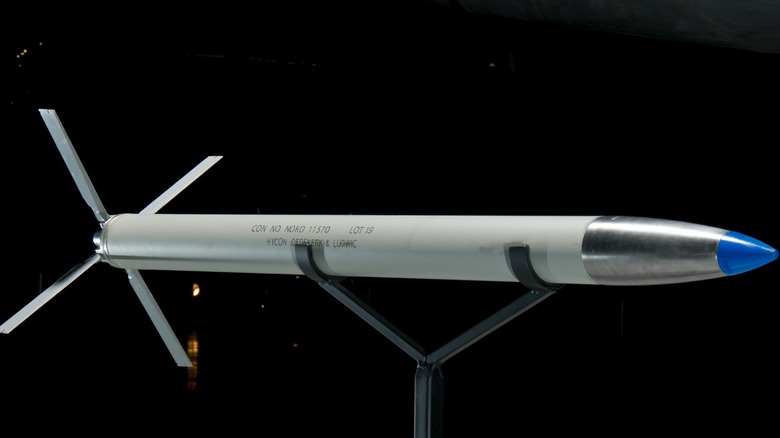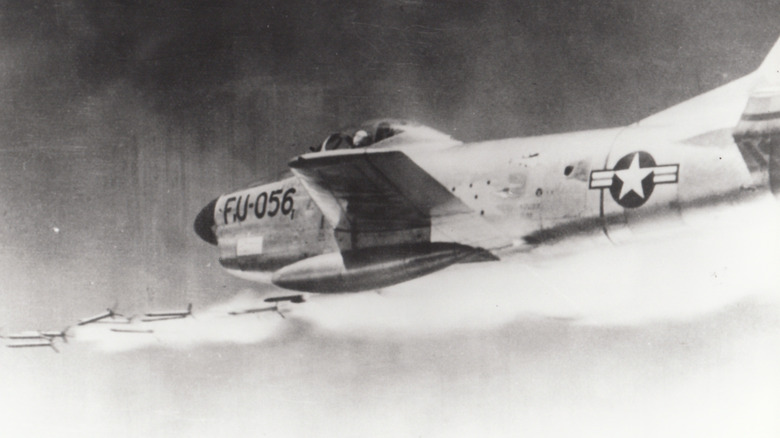Why The Folding-Fin Aerial Rocket Used By The F-86D Fighter Jet Carried The 'Mighty Mouse' Nickname
The United States military has a penchant for applying nicknames to its weapon systems, whether they're a massive nuclear bomb like Fat Man or more commonplace like the Jeep or its replacement, the Humvee. One of the smallest pieces of American ordnance to receive a nickname is the Mk 4 Folding Fin Aerial Rocket (FFAR), which earned the Mighty Mouse moniker. If you're unfamiliar with the character, he's a superhero akin to Superman — only he's a mouse (pictured).
The U.S. Air Force started calling its FFAR Mighty Mouse because of its size and power, as it packs a considerable punch. The rocket, designed for both air-to-air and air-to-surface combat, launched from a firing tube or pod mounted on the wings of various aircraft, including the North American F-86D Sabre. As the name implies, the FFAR could fit within the pod with its fins folded in, and once fired, they popped out so the missile could cruise toward its target.
The Sabre could fire the rockets in salvos of six, 12, or 24 at a time. The Mighty Mouse was comparatively smaller than other air-to-air missiles (AAM) of the time, but they were just as lethal. These little rockets contained a small but mighty 7.55-pound warhead capable of bringing enough destruction with a single hit to down an enemy bomber.
The Mk. 4 Folding Fin Aerial Rocket in action
The FFAR "Mighty Mouse" only measured 3 feet, 6 inches long, with a diameter of 2.75 inches. Once its fins extended, they added 42 inches on either side. The rocket first entered development in 1948 alongside the F-86D Sabre. They were unguided, which is one difference between rockets and missiles, but an experienced pilot could hit their targets no problem. With the ability to see threats up to 30 miles out, pilots would use the F-86's fire control system to calculate guidance information for a potential lead-collision-curve.
They could then select the number of rockets to fire. Once they were 500 yards from the target, the system dispatched the rockets. FFARs saw extensive use during the Korean and Vietnam Wars. According to the China Lake Museum, millions were fired in combat, so the FFAR has a long history of use in aerial combat. They were eventually retired to make way for the more advanced Hydra 70 rocket, which is still in service today.
Unfortunately, it also had a history of failure due to its poor accuracy. While it could down a bomber, actually hitting one was a challenge, which is one of the reasons they were fired in a large salvo instead of individually. Still, the FFAR "Mighty Mouse" proved effective against ground targets, so it remained in service for years, carried by multiple NATO aircraft.

